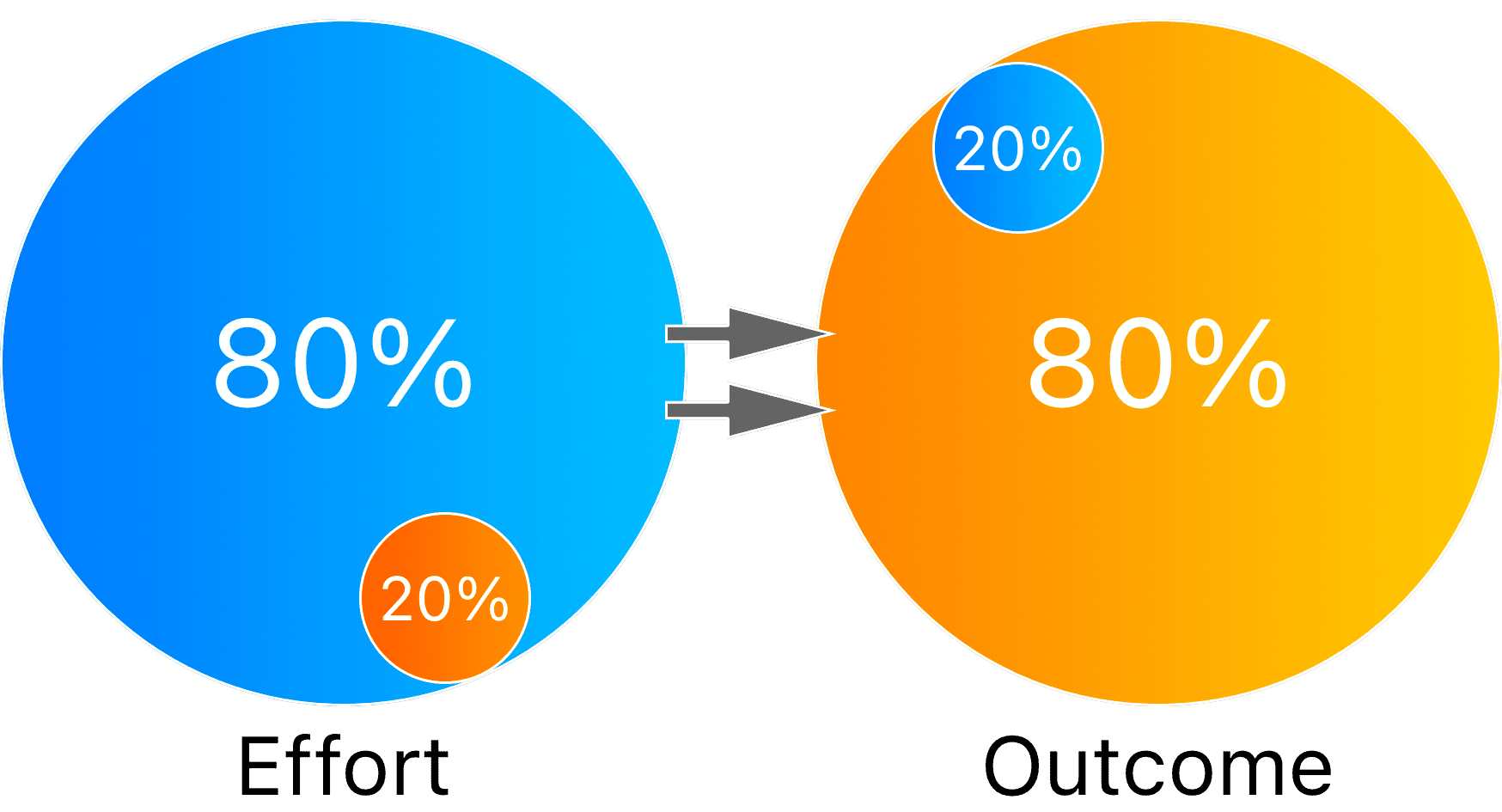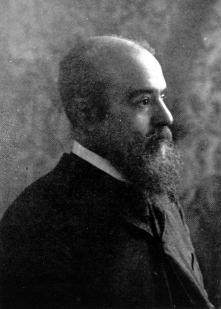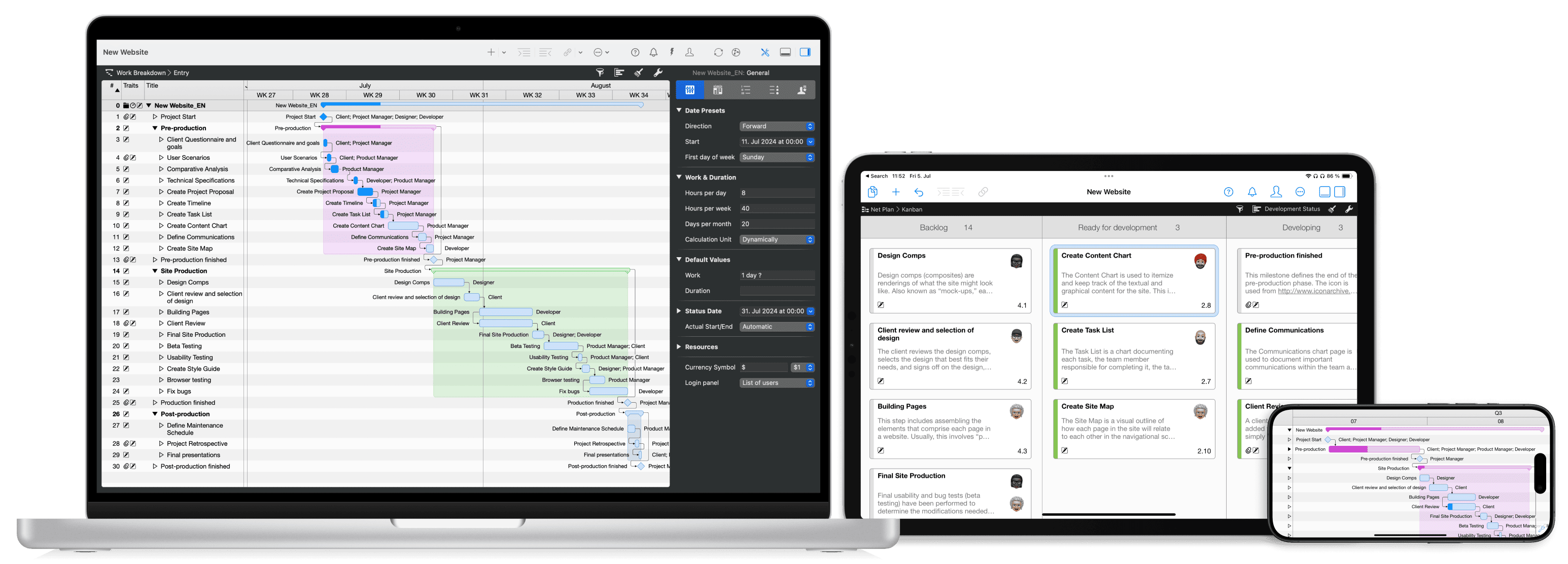Project Management with a Bit of Magic
Plan, manage, and deliver projects efficiently. Merlin Project for macOS and iOS

According to the Pareto principle, 80% of the results come from 20% of the effort. Read how to apply this principle to properly prioritize your tasks.
I'm sure your workday starts much like mine: I start with a cup of coffee in hand, check my calendar and the emails I received overnight. Then I create my to-do list and prioritize the tasks for the day.
But how do we decide what needs priority? There are many techniques to decide what needs to get done and in what order. Commonly used is the Pareto Principle to determine and prioritize tasks that have the greatest impact. This is how you increase your productivity.
What is the Pareto Principle?
Where does the pareto principle come from?
Applications of the Pareto Principle
Advantages & Disadvantages of the 80-20 Rule
The 80-20 Rule for Project Managers
Project Management with Merlin Project
This technique represents the relationship between effort and result or between effort and outcome. The Pareto Principle states that 80% of the results are achieved with 20% of the total effort. The remaining 20% of the results require the most work with 80% of the total effort.
This phenomenon can be observed in many areas. A few examples:
In other words, a small percentage of effort has a disproportionately large impact. It's important to understand this concept because it can help you figure out which tasks you should prioritize to have the greatest impact.

The Pareto principle was developed by Vilfredo Pareto, an Italian engineer, economist and sociologist. He studied the distribution of land ownership in Italy in 1906 and found that about 20% of the population owned about 80% of the land.
The Pareto Principle is not a formal mathematical equation, but a general phenomenon that can be observed in economics, business, time management, and even sports. It is also known as the Pareto effect, 80-20 rule or 80/20 law.
Although the 80-to-20 rule can be applied to any industry, it is usually used in business and economics. This is because it is useful for the efficiency of a business, as it helps to determine where efforts should be focused in order to maximize performance.
The pareto principle is also frequently used in project and time management to identify important work packages and achieve rapid progress with sufficiently good results. The 80-to-20 rule also helps to identify work that can be postponed or omitted due to a lack of efficiency.
A common misinterpretation of the Pareto Principle is that 80% of the results can be achieved with 20% of the effort. This is not exactly the case. The 20% and 80% percentages do not refer to effort, but to the causes and consequences you are working on.
Key Takeaway
The goal is not to reduce the effort, but to focus it on a specific part of the work to achieve a greater impact. You still need to focus 100% on that 20% to get 80% of the results.
When applied effectively, this principle can transform work processes, decision-making, and overall productivity. However, it is important to approach the principle with caution, as its oversimplification can also lead to unintended consequences.
| Advantages | Disadvantages |
|---|---|
| Boosts efficiency by focusing on key tasks | Misinterpreted as 80% results = 20% effort |
| Clarifies priorities for better planning | Risks neglecting routine but necessary tasks |
| Increases productivity and output | May lead to imbalance in work distribution |
| Breaks work into manageable segments | Over-simplification of complex processes |
| Sharpens strategies and decision-making | Overlooks dependencies and external factors |
| Enhances resource allocation and accountability |
In practice, the Pareto Principle helps by:
• Driving Efficiency: Concentrate on the critical tasks that yield the highest results, allowing teams to work smarter, not harder.
• Setting Clear Priorities: By identifying the key 20% of tasks, you gain clarity on where to invest time and effort, which helps in planning and executing strategies.
• Boosting Productivity: Focusing on high-impact areas can lead to immediate improvements in daily output and longer-term performance metrics.
• Breaking Down Work: Dividing projects into manageable segments based on impact makes it easier to allocate resources and track progress.
• Sharpening Strategies: It refines decision-making processes, enabling more precise strategies for growth, cost-effectiveness, and resource management.
• Enhancing Resource Allocation: Knowing which tasks drive the most results allows for better budgeting and distribution of time and finances.
• Encouraging Accountability: Teams can better measure performance as they concentrate on the outcomes that matter most.
On the downside, challenges include:
• Misinterpretation: A common error is to believe that 80% of results require only 20% of the effort. In reality, while the output is skewed, nearly all tasks still demand full commitment.
• Neglecting Routine Tasks: Overfocusing on high-impact work might lead to the neglect of essential but less glamorous activities such as emails or administrative duties that maintain overall functionality.
• Balancing Act: Ignoring non-priority tasks can result in an imbalance, where important, albeit lower-impact, activities are pushed aside, potentially harming long-term performance.
• Over-Simplification: Not every scenario conforms neatly to the 80/20 split. Some complex or creative projects may require a more nuanced approach that doesn’t align with strict Pareto distribution.
• Dependency on External Factors: Certain outcomes depend on external elements or collaboration, making a rigid application of the rule less effective.
The Pareto Principle can be a game-changer for project managers. Let’s apply it to each phase of the project planning cycle and focus on what really drives results:
In the project initiation, you can use the 80/20 rule to identify which stakeholders, project requirements, or potential risks carry the most weight. For instance, if 20% of the stakeholders influence 80% of the project outcomes, it makes sense to focus early efforts on engaging those key players.
Which stakeholder or risk has the biggest potential to either make or break the project?
During the planning stage, the Pareto Principle helps you prioritize tasks and allocate resources. Imagine you’re developing a detailed project schedule with hundreds of tasks. A quick analysis might reveal that just 20% of these tasks drive most of the project’s value. This insight allows you to concentrate your planning and risk management activities on those critical tasks—ensuring you have adequate resources, budgeting, and contingency plans for the most impactful elements.
Which tasks are truly critical—and which ones could be streamlined or delegated?
When you move into the execution phase, the principle continues to serve as a guide. For example, you might find that 20% of the issues reported by your team are causing 80% of the delays. Addressing these issues promptly not only minimizes disruptions but also keeps the project on track. Similarly, if a few key activities are consistently yielding most of the progress, it makes sense to maintain momentum by continually investing energy in those areas.
Where are most of your delays coming from—and which actions are driving the most progress?
In the monitoring and control phase, applying the Pareto Principle can simplify performance tracking. By focusing on the top 20% of metrics that indicate project health—such as critical milestones or major risk indicators—you avoid getting overwhelmed by less significant data. This selective focus helps in early detection of problems, allowing for swift corrective actions that prevent minor issues from snowballing.
Which few indicators tell you the most about your project’s health?
Finally, during project closure, the Pareto Principle aids in a more effective post-project review. By pinpointing which 20% of challenges caused 80% of the hurdles, you gain clear insights into areas for improvement. This feedback not only helps in celebrating the successes but also refines planning for future projects, making your entire project management process more efficient over time.
What were the few key challenges—and what can you learn from them for next time?
In every phase of the project planning cycle—from initiation through closure—the Pareto Principle offers a practical approach to focus your efforts on the most impactful elements, ensuring your team remains agile, efficient, and well-prepared to meet project goals.

An important aspect of team management is finding different ways to help your team improve its productivity. With Merlin Project you can organize all team projects and activities, share files and leave notes and comments in one place, saving you time.
Your ideas, our magic – make projects easy! Test now 30 days for free.
